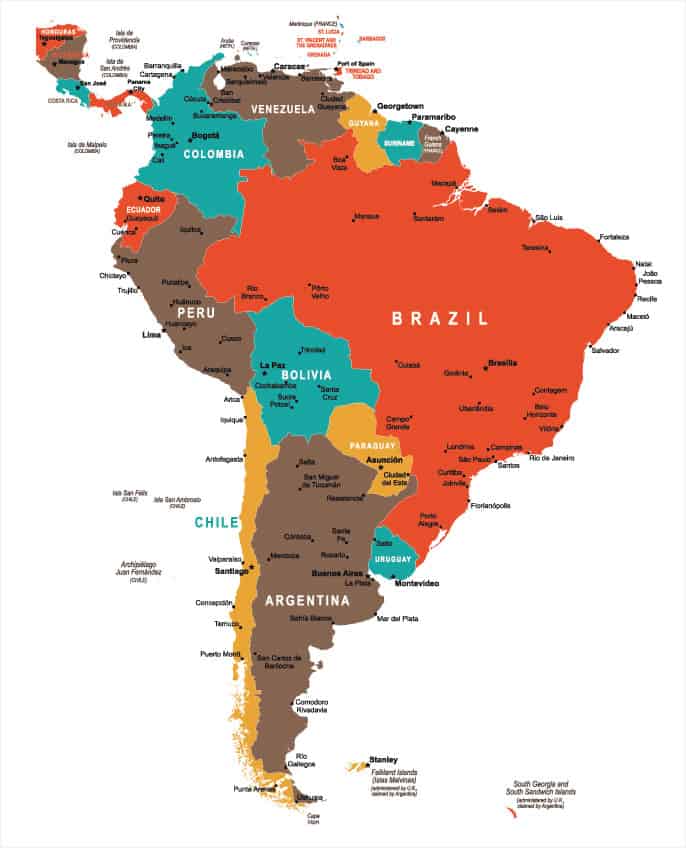TRAVEL SOUTHAMERICA!
A journey to five wonderful countries
Let your heart be your compass ♥

-
#1 Columbia 🇨🇴
Colombia officially the Republic of Colombia, is a tropical equatorial country in northern South America. It is in the northwest part of the continent, and it has an area of 1,141,748 km² (440,839 sq mi). It is the only South American country with coasts on both oceans (Pacific and Atlantic).

Learn more about Columbia
-
#2 Peru 🇵🇪
Peru, officially the Republic of Peru, is a country in western South America. It is bordered in the north by Ecuador and Colombia, in the east by Brazil, in the southeast by Bolivia, in the south by Chile, and in the south and west by the Pacific Ocean. Peru is a megadiverse country with habitats ranging from the arid plains of the Pacific coastal region in the west to the peaks of the Andes mountains extending from the north to the southeast of the country to the tropical Amazon Basin rainforest in the east with the Amazon river.[9] At 1.28 million km2 (0.5 million mi2), Peru is the 19th largest country in the world, and the third largest in South America.

Learn more about Peru
-
#3 Chile 🇨🇱
Chile, officially the Republic of Chile, is a country in western South America. It occupies a long, narrow strip of land between the Andes to the east and the Pacific Ocean to the west. Chile covers an area of 756,096 square kilometres (291,930 sq mi) and has a population of 17.5 million as of 2017.[6] The capital and largest city is Santiago and the national language is Spanish.

Learn more about Chile
-
#4 Argentina 🇦🇷
Argentina is a country located mostly in the southern half of South America. Sharing the bulk of the Southern Cone with Chile to the west, the country is also bordered by Bolivia and Paraguay to the north, Brazil to the northeast, Uruguay and the South Atlantic Ocean to the east, and the Drake Passage to the south. With a mainland area of 2,780,400 km2 (1,073,500 sq mi),[B] Argentina is the eighth-largest country in the world, the fourth largest in the Americas, the second largest in South America after Brazil, and the largest Spanish-speaking nation by area. The sovereign state is subdivided into twenty-three provinces (Spanish: provincias, singular provincia) and one autonomous city (ciudad autónoma), Buenos Aires, which is the federal capital of the nation (Spanish: Capital Federal) as decided by Congress.[18] The provinces and the capital have their own constitutions, but exist under a federal system. Argentina claims sovereignty over part of Antarctica, the Falkland Islands (Spanish: Islas Malvinas), and South Georgia and the South Sandwich Islands.

Learn more about Argentina
-
#5 Uruguay 🇺🇾
Uruguay is a country in the southeastern region of South America. It borders Argentina to its west and southwest and Brazil to its north and northeast, with the Río de la Plata (River Plate) to the south and the Atlantic Ocean to the southeast. Uruguay is home to an estimated 3.51 million people, of whom 1.8 million live in the metropolitan area of its capital and largest city, Montevideo. With an area of approximately 176,000 square kilometers (68,000 sq mi), Uruguay is geographically the second-smallest nation in South America, after Suriname.

Learn more about Uruguay